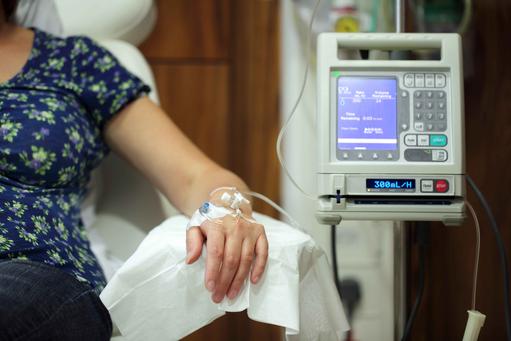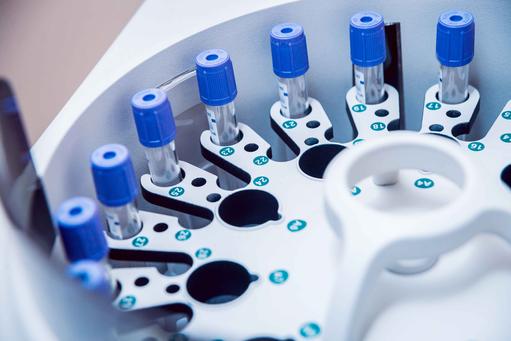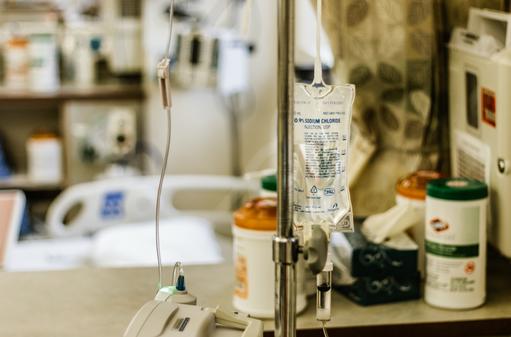|
Interim report of the 2nd National Cancer Strategy
In October 2017, NHS England published an interim report of its 2015 National Cancer Strategy, which suggested that, “Survival rates for cancer have never been higher, and overall patients report a very good experience of care. However, we know there is more we can do to ensure patients are diagnosed early and quickly and that early diagnosis has a major impact on survival. We also know that patients continue to experience variation in their access to care, and this needs to be addressed. Early diagnosis, fast diagnosis and equity of access to treatment and care are central to the ‘National Cancer Programme’ and the transformation of services we want to achieve by 2020-21.” According to an NHS spokesperson, “Figures show that cancer survival is now at an all-time high in England, as a result of better access to screening, funding for effective new treatments and diagnostics and continued action to reduce smoking.”
Why cancer mortality rates in Britain lag other European countries
“If you look at similar European countries the proportion of GDP (Gross Domestic Product) the UK has spent on health in the last 10 to 15 years is low and has increased less than the others,” says Michael Coleman, Professor of Epidemiology and Vital Statistics at the London School of Hygiene & Tropical Medicine and co-author of the international cancer study reported in the March 2018 edition of The Lancet. UK healthcare spending fell from 8.8% of GDP in 2009 - when it averaged 10.1% in leading European countries - to 7.3% in 2014-15. “This difference between the likes of Germany and France is likely to explain some of what we are seeing,” says Coleman and he also suggests that, “The number of medical specialists who deal with these diseases [cancer] tends to be low compared to other similar countries,” [Our emphasis]. Let us examine the relative European healthcare spends and levels of staffing in NHS England.
Comparative GDP spends on healthcare
The OECD’s November 2016 Health at a Glance report suggests that in 2013 (the latest year for which data have been published) the UK spent 8.5% of its GDP on public and private healthcare. And, a 2016 report from the King’s Fund, a charity, suggests that projected spending on NHS England as a proportion of the UK’s GDP in 2020-21 is 6.6%, just 0.3% above what it was in 2000.
Challenges comparing healthcare spends
Notwithstanding, linking cancer mortality rates to the proportion of GDP nations spend on healthcare is not straightforward. This is partly because of, (i) different nations have different sources of healthcare funding, and (ii) a person’s purchasing power is different in different countries. Fluctuations in relative national economic growth make such comparisons over time and between nations challenging. According to The Health Foundation, a higher percentage of UKhealthcare spending is publicly funded compared to other European countries. For example, “In 2012, publicly funded spending accounted for 84.0% of UK healthcare spending. This is the third highest level in the EU-15 (average: 76.5%). In 2012, UK public spending on healthcare was slightly higher than the EU-15 average of 7.6% of GDP”. Between 2008 and 2012 the average annual change in healthcare spending per person was lower for the UK than most EU-15 countries, which was largely the result of Greece, Ireland and Portugal making significant cuts to their healthcare spending. The rising prevalence of cancer and other chronic long-term diseases, is a significant driver of increased healthcare costs. According to OEDC data, UK spend on chronic lifetime conditions is similar to the European average. However, the UK spends less than other European countries on pharmaceuticals and out-of-pocket payments. Further, on average, UK patients spend less time in hospital and generally use fewer resources (measured in terms of staff and beds).
A 2017 paper published by the Nuffield Trust suggests that, when taking into consideration different sources of healthcare funding and purchasing power parity, the UK’s healthcare spend actually might be keeping up with that of other European nations.
NHS “dangerously” understaffed
Let us now consider staffing. In 2017, The Royal College of Emergency Medicine reported that primary and emergency care doctors, which are crucial for the early diagnosis of cancer, were experiencing significant recruitment and retention challenges. According to 2018 figures, NHS England has nearly 100,000 jobs unfilled, which include 35,000 nursing posts and 10,000 doctor vacancies. The total vacancies represent 1 in 12 of all NHS posts, which is enough to staff about 10 large hospitals. Further, the high number of unfilled NHS posts coincides with 0.25m more people visiting A&E in the first quarter of 2018 than in the equivalent period in 2016. According to Saffron Cordery, the director of policy and strategy for NHS Providers, “These figures show how the NHS has been pushed to the limit. Despite working at full stretch with around 100,000 vacancies and a real risk of staff burnout, and despite treating 6% more emergency patients, year on year in December (2017), trusts cannot close the gap between what they are being asked to deliver and the funding available”. A February 2018 finance report suggests that NHS England is heading for a £931m deficit in 2018 and is "dangerously" understaffed. This year-on-year deficit was revised to a projected £1.3bn shortfall, which is 88% worse than planned.
Reasons for shortages of health professionals
The NHS staffing challenges are aggravated by the fact that British trainee primary care doctors are dwindling, newly qualified doctors are moving abroad, and experienced doctors are retiring early. Over the lifetime of NHS England, the UK has trained significantly fewer healthcare professionals than it needed, and the supply of qualified young British people has consistently outstripped the number of places in medical schools and nurse training. According to data from the General Medical Council (GMC), between 2008 and 2014 an average of 2,852 certificates were issued annually to enable British doctors to work abroad. A 2015 British Medical Association (BMA) poll of 15,560 primary care doctors, found that 34% of respondents plan to retire early because of high stress levels, increasing workloads, and too little time with patients. Further, it is estimated that 10% of doctors and 7% of nurses employed by NHS England are nationals of other European countries. The uncertainties of Brexit (a term for the potential departure of the UK from the EU) add to NHS’s recruitment and retention challenges of healthcare professionals. According to a 2017 Health Foundation Report, in 2016, more than 2,700 nurses left the NHS; an increase of 68% since 2014.
UK policy approach to healthcare shortages has not changed
Notwithstanding, NHS staff shortages are not new. In the 1960s, NHS hospitals in Britain introduced mass recruitment from Commonwealth countries, and this has influenced staffing policies ever since. Being able to recruit doctors and nurses from foreign countries provided NHS England with an “easy” solution to staff shortages. However, over the past 2 decades the global healthcare ecosystem has changed significantly, while UK healthcare staffing policies have not kept pace with the changes. Today, there is a substantial gap globally in the supply and demand of healthcare professionals. Countries such as India, which traditionally could be relied upon to provide healthcare professionals for NHS England, have changed and the pool of potential Indian recruits have shrunk. Over the past 2 decades, the Indian economy has improved and the nation has developed a number of world-class hospital groups such as Apollo, Fortis and Narayana Health, which offer internationally competitive terms and conditions to Indian doctors and nurses. Increasingly Indian hospitals retain more of the nation’s healthcare professionals, and indeed attract doctors working in the UK and the US to return. Further, NHS England has tended to be staffed on the basis of what successive governments can afford rather than what NHS patients’ actually need.
Challenges of planning healthcare needs
Although there is a significant shortage of healthcare professionals in NHS England, it is not altogether clear that, (i) significantly increasing the number of NHS health professionals in the short to medium term will be possible, and (ii) simply increasing staff numbers will improve cancer care. Over the past 2 decades, as technologies and demographics have changed, so the demands on cancer professionals have changed. It is not necessarily the case that the NHS has the right mix of staff with the right mix of skills to deal effectively with changing conditions. Changing traditional roles rather than simply boosting numbers might contribute more to reducing cancer mortality rates and improving the quality of cancer care. Further, it seems reasonable to suggest that, with the aforementioned challenges, a greater proportion of the UK’s annual healthcare spend might be more effective were it directed at cancer prevention rather than “diagnosis and treatment”.
Preventing cancer
A substantial proportion of cancers can be prevented including cancers caused by tobacco use, heavy consumption of alcohol, and obesity. According to the World Cancer Research Fund about 20% of all cancers diagnosed in the developed world are caused by a combination of excess body weight, physical inactivity, excess alcohol consumption, poor nutrition, and tobacco use, and thus could be prevented. Certain cancers caused by infectious agents such as the human papilloma virus (HPV), hepatitis C, (HCV), and human immunodeficiency virus (HIV) can be prevented by human behavioural changes, vaccination or treatment of the infection. Further, many of the 5m skin cancer cases worldwide (16,000 in the UK), which are diagnosed annually could be prevented by protecting skin from excessive sun exposure and not using indoor tanning machines.
Cancer screening
Screening is known to reduce the mortality of cancers of the breast, colon, rectum, cervix, and lung. Screening can help colorectal and cervical cancers by allowing for the detection and removal of pre-cancerous lesions. Screening also provides an opportunity for detecting some cancers early when treatment is less expensive and more likely to be successful. Early diagnosis is an important factor in improving cancer outcomes. Currently, the UK offers 3 national screening programs for bowel, breast and cervical cancer. Notwithstanding, recent reports suggest that these programs are not being fully utilised. For example, in 2017 the percentage of women taking up invitations for breast cancer screening was at the lowest level in a decade, dropping to 71%. Over 1.2m women in the UK (25% of the eligible population) did not take up their invitation for cervical screening. Further, a heightened awareness of changes in certain parts of the body, such as the breast, skin, eyes and genitalia may also result in the early detection of cancer.
Reconciling bureaucracy with innovation
We have described how UK cancer strategies are determined from the top. Cancer care professionals conform to internationally accepted standard processes, which facilitate and reinforce control. ‘Control’ and ‘conformism’ are in the DNA of cancer healthcare professionals and provide the cultural norms of NHS cancer care programs. NHS managers ensure conformance to clinical procedures, medications, targets, budgets, and quality care standards. This describes a classic “bureaucracy”, which is the technology of control and conformism, and the 70-year old command and control structure of NHS England. While control, alignment, discipline and accountability are very important to cancer care programs, innovation is equally important. If NHS England’s cancer mortality rates are to be compatible with those of other European healthcare systems we will have to find a way to reconcile the benefits of bureaucracy - precision, consistency, and predictability - while making the architecture and culture of our cancer care programs more innovative and more compatible with the demands of rapidly evolving 21st century science and technology.
Takeaways
Cancer is a vexed and profoundly challenging disorder. As soon as you read about a breakthrough you have news that the cancer has outwitted the scientists, hence the name, “the emperor of all maladies”. Cancer care in the UK has improved, but still the majority of British cancer patients would faire significantly better in other European countries. When reflecting on the myriad of cancer strategies, reports, and taskforces over the past 2 decade you cannot help but think that NHS England suffers from an element of bureaucratic inertia: the inevitable tendency of the NHS to perpetuate its established procedures and modus operandi, even if they do not reduce cancer mortality rates to those experienced by other European nations. The UK policy debate to resolve this problem tends to be dominated by “more”: more money, more doctors, more nurses. Historically this has provided successive governments with a “get-out-of-jail-card” because circumstances meant that the NHS could always provide more. This is not the case today. The global healthcare ecosystem has changed quicker than UK cancer strategies and quicker than structural changes in the nation’s healthcare system. Improving cancer care in the UK will require more than inertia projects. It will require more innovation, more long-term planning, more courage from policy makers, more attention to actual patients’ needs rather than providing what is politically available. The UK healthcare establishment should be minded of Darwin who suggested that, “It is not the strongest of the species that survives, nor the most intelligent, but the one most responsive to change.”
|





















































